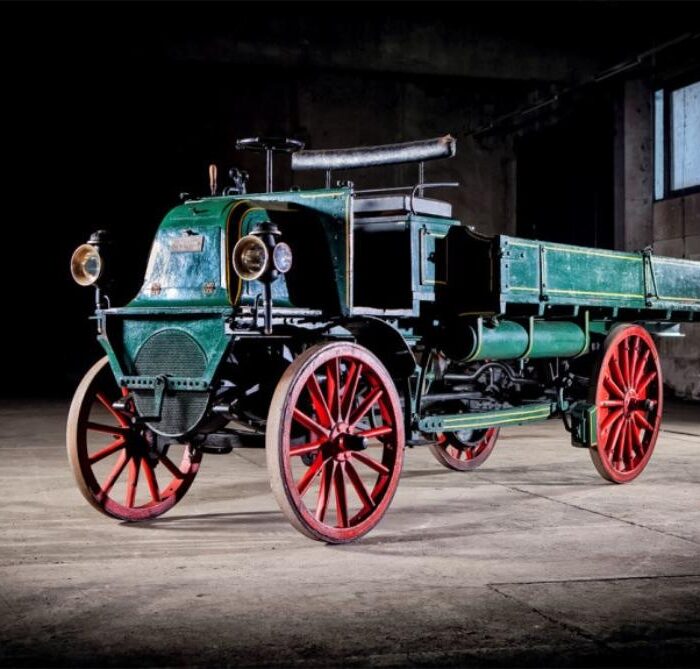At half-past four in the morning, I was racing down an empty highway. The long nose of the car cut through the veil of fog, while the first rays of the sun scattered sparks across the green hood. The wind burst through the open window, and the enveloping cabin blurred the boundaries between my body and the car. The petrol-fueled V8 engine groaned with a supercharger, as nearly four hundred horsepower surged from beneath my foot. The last turn on the track, and there it was – the driver’s bliss. The Jaguar XJR, one of the best and, without a doubt, the most beautiful sedan of the turn of the millennium. One moment, a tear even welled up in my eye. How could they ruin it with their own hands?
In 2023, one could have celebrated the 55th anniversary of the first Jaguar XJ sedan, the 35th anniversary of the first ‘charged’ XJR version, or the twentieth anniversary of the first aluminum XJ. However, JLR has a different agenda now: they have decided to ceremoniously wind down the production of sports cars with internal combustion engines, marking exactly 75 years since the release of the legendary XK120 roadster in 1948. From now on, it’s all about electric power.
This fall, they will unveil an electric vehicle in the four-door Gran Turismo class (think of it as Jaguar’s answer to the Taycan), and shift their focus to the production of niche luxury electric vehicles. They will not be reviving the flagship XJ sedan, which was discontinued in 2019; the two-door F-Types will also be retired, and all internal combustion engines in Jaguars are expected to be completely phased out by the mid-2030s.

But time can still be turned back a bit. For example, my friend Anton from the y-timer.ru community has just purchased a green 2003 Jaguar XJR from the X350 series in pre-facelift trim, with a mileage of only 50 thousand kilometers. Essentially, it’s the first aluminum XJ of the last twin-headlight generation in the condition of a brand new car. And what’s most astonishing is that the budget for such a gem today is on par with the price of some generic Chinese crossover, or a three-year-old BMW X3 from Germany.
I don’t even need to ask what you would choose. After all, if you haven’t closed this page yet, it means we be of one blood.
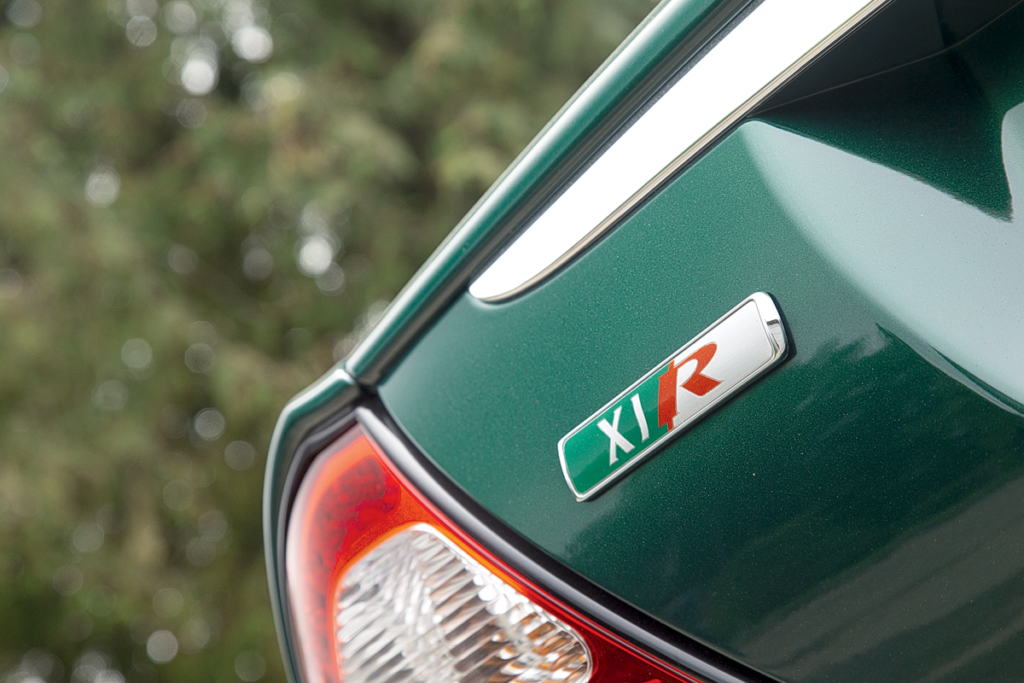
Jaguars designated with the letter ‘R’ for road-going versions have been in production since 1988. The inaugural models were the XJR-S coupe and the XJR sedan, part of the XJ40 series.
In 2003, the new XJ was criticized for having an outdated appearance at birth, and its retro look compared to the Bangle-designed BMW 7 Series and the technologically advanced Audi A8 could only impress the veterans of Jaguar clubs. However, place these cars side by side today and see which one has aged more gracefully. In my opinion, the XJ is like a real-life Benjamin Button, which will only become more appealing as time goes on.

There’s an old joke that the laziest designers work at Porsche, but Jaguar’s interior designers might have something to say about that. The cabin design, featuring a triple gauge cluster and an arching center console, first appeared in the XK coupe in 1996 and was replicated across various models until the late 2000s. But the XJ got its most comfortable and luxurious version.
Probably the same can be said about the interior, but, you know, as a child I didn’t dream that my car would necessarily have veneer and chrome; other materials attracted me. Therefore, I am indifferent to wood, but I am absolutely delighted that the ergonomics of a twenty-year-old sedan do not yield a bit to all modern standards.
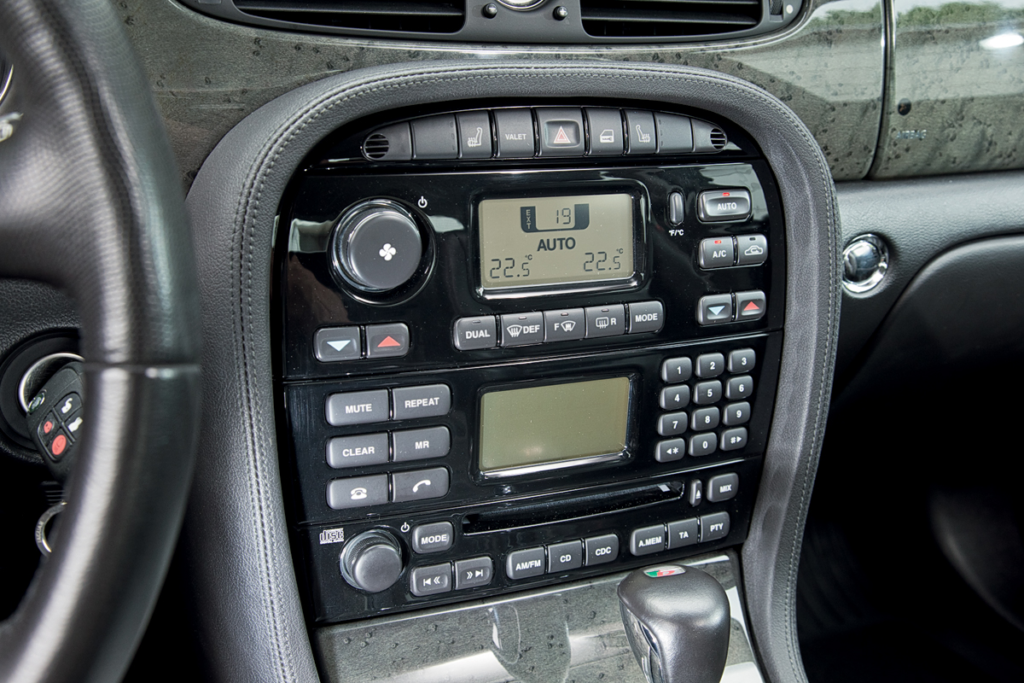
Climate control, phone, music – the array of buttons is organized logically and conveniently, but the simple aesthetics of smooth plastic clash with the rest of the interior. Moreover, the XJ shared this console with the cheaper X-Type and S-Type models, which the Jaguar folks didn’t seem to see as a problem.
And the buttons! Generally, I believe that when choosing youngtimers, one should avoid the top trims with multimedia screens from the early century. If you miss the 360p resolution display, then the Nokia 7710 is for you. But in an old-school car, there should be nothing but buttons and monochrome.

The pre-facelift X350 is nearly perfect in this regard, as it offers all the modern conveniences in an analog format. However, the instruments leave a bit to be desired. Anyone who has seen the interior of a Series 1 E-Type with Smiths dials won’t be impressed by the antiquated instruments with plastic needles.
But at least the instruments bear the label: ‘Supercharged’.

The Ford key, with a cylindrical blade, is inserted into the lock on the front panel. The starter grumbles briefly before awakening the 4.2-liter V8 with an Eaton M112 mechanical supercharger. This fundamental engine, part of the AJ26 project, delivers 405 hp and 553 Nm of torque in this configuration. Shift the lever to ‘D’. Hit the gas.

The driver can adjust the steering wheel, seat, and pedals. The side bolsters provide good lumbar support, but there’s not much shoulder support. The cupholder designers in the early 2000s hadn’t yet realized that they should size them according to smartphones rather than mugs.
Hey, XJ, where’s your R? I remember how Misha Petrovsky described the launch of the similar Daimler Super Eight sedan in 2007: wheel spin, smoke from under the tires, a roar, quite the spectacle…
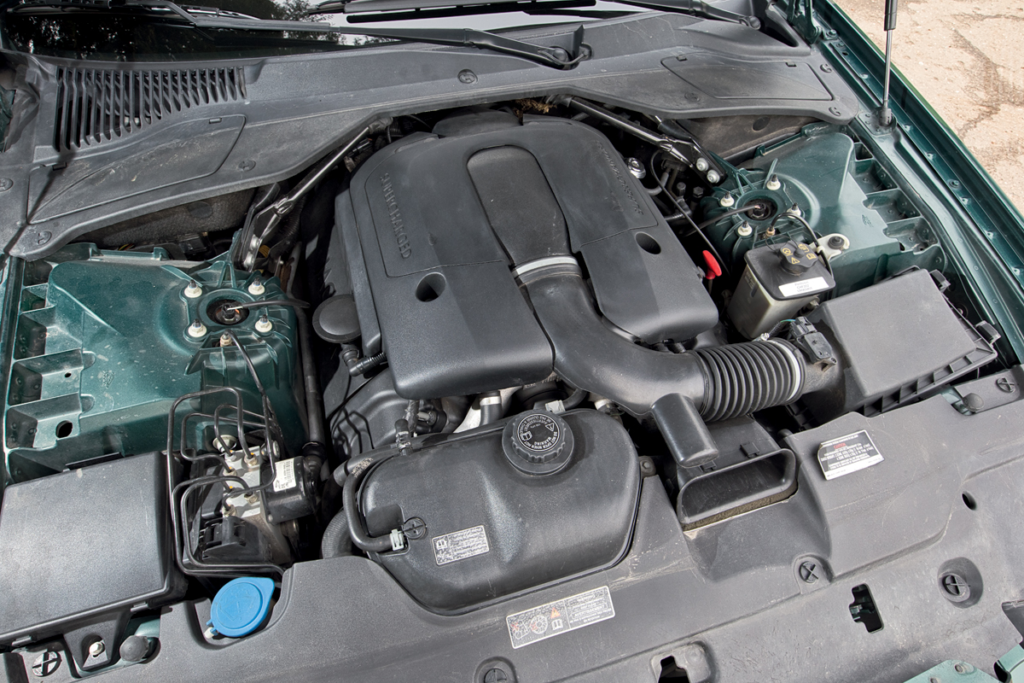
In 2003, the burly supercharger was concealed under plastic. The displacement of the V8s increased to 3.5 and 4.2 liters – they were now called AJ33 and AJ33S. The XJR sedans used the version without variable valve timing, but the Jaguar XKR from 2006 onwards was equipped with the same engine with variable phases.
Hmm, my experience is quite the opposite: a very discreet launch. A slight delay in the beginning, and then just a torrent of torque. But no aggression. The modern Hankook tires don’t even skid with the stability system turned off. And the most amazing thing is that the result is still the same as Petrovsky’s: 6.7 seconds to 100 km/h with both pedals in Sport mode.

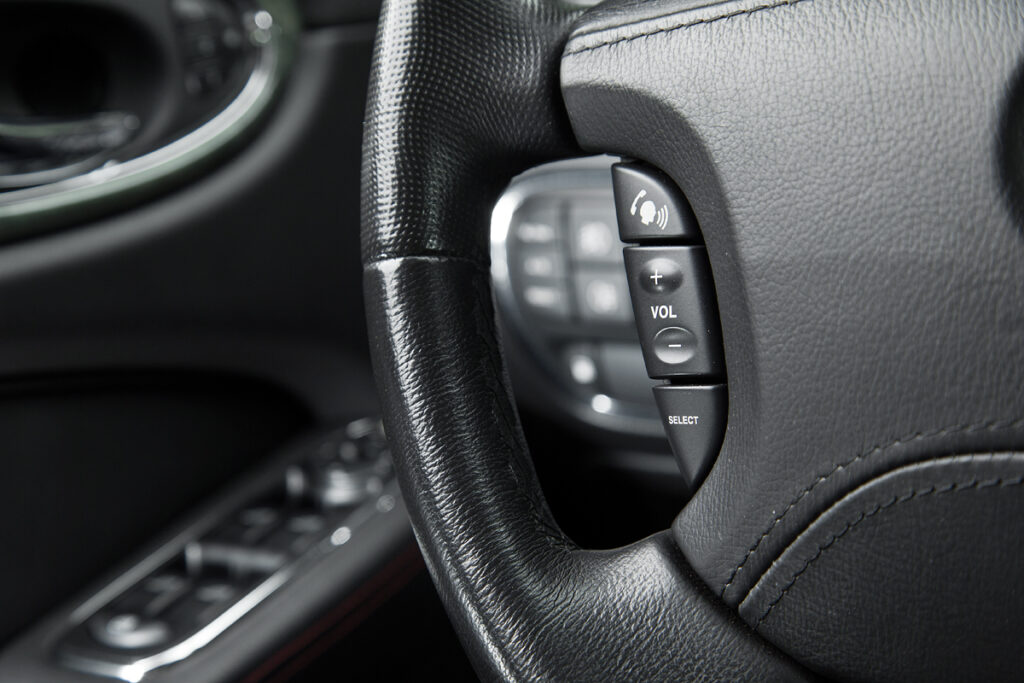
But if you simply launch from a standstill without preparation, it’ll be seven seconds or even slightly more. And that is worlds apart from the 5.3 seconds that Jaguar itself promises.
I honestly spent two days trying to get close to the official result, but eventually gave up this quest of taming the beast: the XJR is really born for a different pace of life. There’s no need to leap from a standstill; rather, gracefully glide onto the highway and wait for all constraints to fall away.

“Vroom-vroom-vroom,” says the supercharger. Ah, there it is, the beast is unleashed. Almost instantaneous throttle response, an abundance of torque, and effortless, rapid acceleration. The tachometer needle sweeps to 3000 in one fell swoop and immediately catapults to 5900, followed by an imperceptible gear change and a new jump on the scale. The six-speed ZF automatic transmission selects shift points perfectly and always offers the right gear. I don’t know if I should add “for now”, as in city traffic, it has already shifted gears with a jolt a couple of times.

The curved gear selector, dubbed J-gate, first appeared on the XJ40 series sedan in 1986, and the 2003 XJ was the last Jaguar with such a selector.
But I liked Jaguar’s manual shift mode using the J-gate, where you need to pull the lever towards you and then select gears almost like a manual transmission: turns out, this is simpler and more intuitive than modern paddles or rocking selectors. There’s also a Sport button and full ESP deactivation in one action. After all, the letter R stands for Racing, doesn’t it?
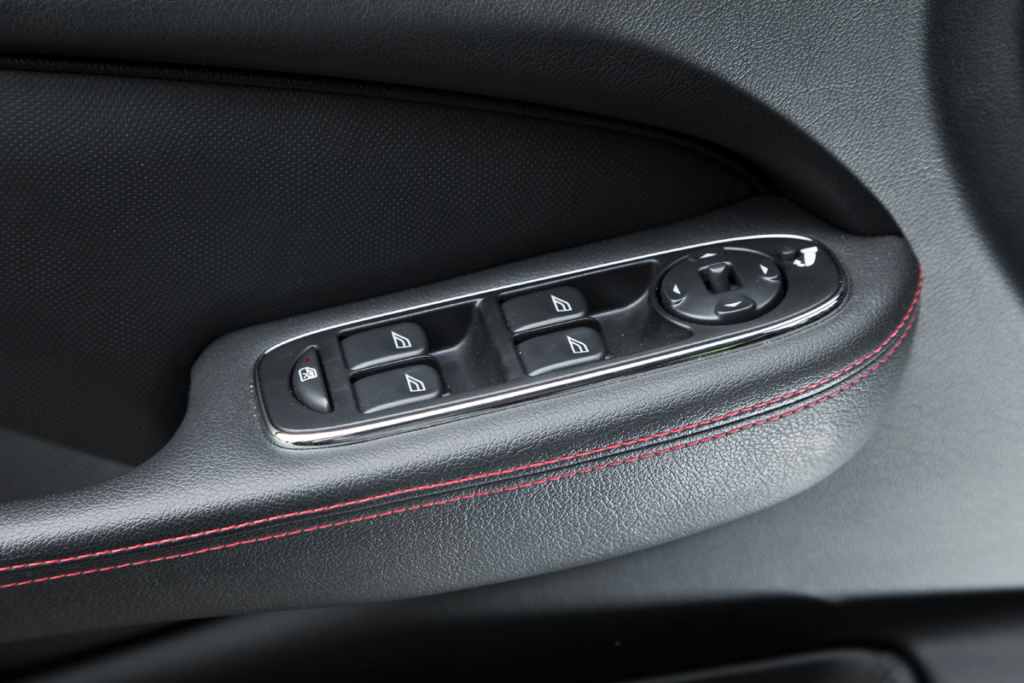
Alas, it has too tame a character for a sports sedan. The steering is not the quickest (2.8 turns lock to lock) and lacks transparency: it doesn’t have enough self-centering force in the near-zero zone and feedback in the corners. Although this doesn’t prevent you from enjoying the drive, there isn’t a complete unity with the car. Nor is there a desire to chase the curves.


The aluminum XJ still weighs 1795 kg, and in turns, this mass pulls it outward with all wheels sliding. To get around under throttle, you need to keep the revs in the supercharger’s maximum performance zone. And even in this case, the XJR primarily tries to spin the unloaded rear wheel. It’s a shame that after the introduction of traction control in the early ’90s, Jaguar stopped equipping sedans with limited-slip differentials.
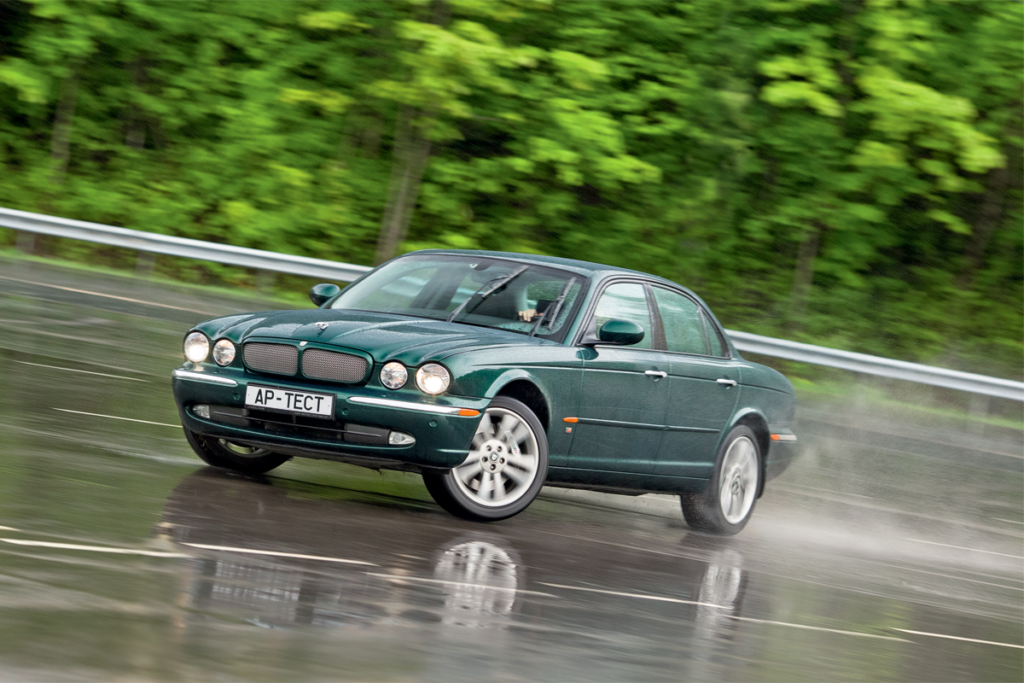
Rear-wheel drive, 405 horsepower, and a fully disable-able stability system – but no limited-slip differential. Therefore, with the XJR, you need to first rock it, then keep the revs near the peak torque.
But from the X350 generation, the XJ began to be equipped with air suspension. It significantly smooths out the profile on rough roads, although it still lets in jolts from large bumps and joints. That’s why I drove in Sport mode almost all the time, which tightens the dampers. The loss in comfort is minimal, but the responses are more integrated, less body roll, no oscillation, and the only thing to complain about is the bouncing on ruts. Moreover, the Sport button sharpens the throttle and almost always keeps the engine on the edge of the sweetest supercharger range – from 3000 to 6000 rpm.

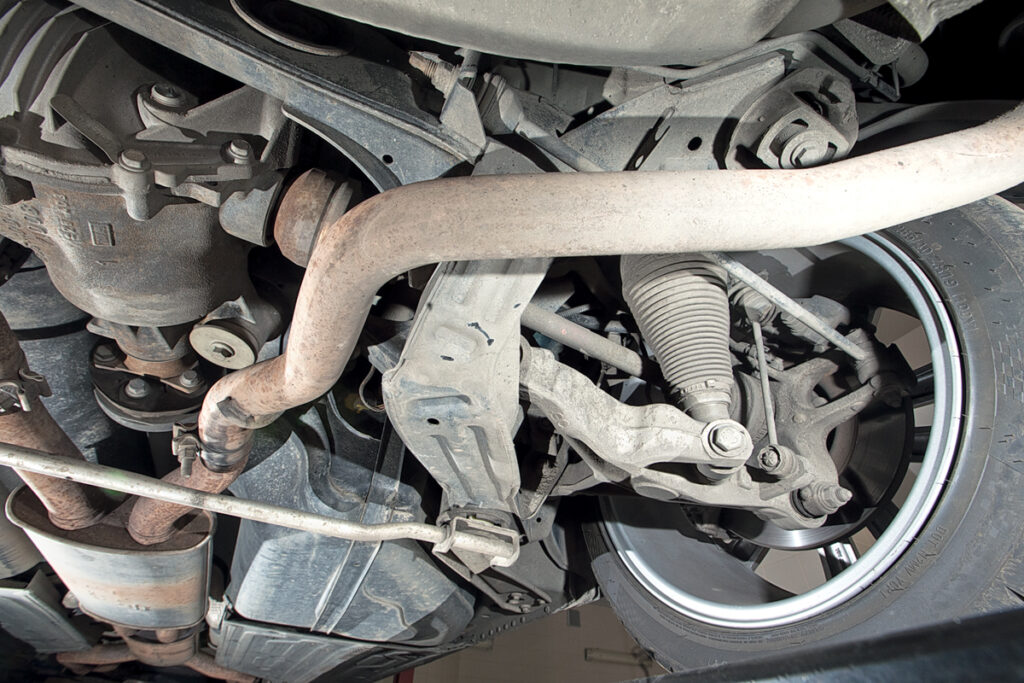
The rear suspension of the X350 sedan consists of a subframe, two triangular control arms, and air struts. The driveshafts and control arms are separate, and instead of universal joints, it uses CV joints. The front also has double wishbone suspension. Structurally, this setup is a repeat of the S-Type model’s chassis after its 2002 facelift – this is Ford’s DEW98 platform, adapted for an aluminum body. Today, the Jaguar F-Type remains the last production car with such suspension.
That’s just the fuel consumption is more than 20 liters per 100 km…
You know, I would say that the “R” in this Jaguar stands for “Rejoice”, “Rarity”, and “Recklessness”. With all these, it is more akin to a personal business jet when you have a pilot’s license rather than a fighter jet. And that suits me very well.
I am serious. A large, fast sedan as a second family car is absolutely my thing. My beloved BMW 530i handles this task well, but the XJR would simply be ideal. I’m telling you as a new father, whose whole family no longer fits into a single five-seater car.
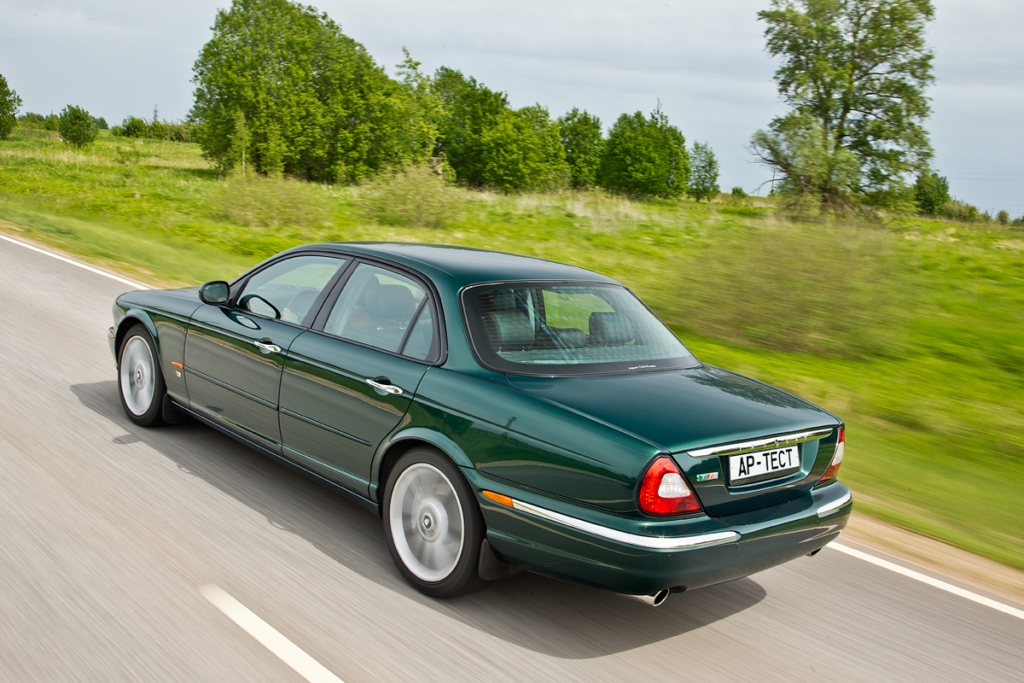
Three-row crossovers are nonsense. After all, when you leave the house, you put on two shoes, not trying to fit both feet into one huge felt boot. The same goes for cars: having two different family vehicles is the norm. A station wagon and a spacious performance sedan are the dream.
Imagine being able to take the older kids to grandma’s, and the younger ones to grandpa’s at the same time. Or, when needed, the bicycles can go with dad, and three rascals, a baby, and a dog can go with mom. My favorite scenario is this: put all the kids in the Opel, and head out of town in the Jaguar with my wife. In this case, the fast XJR is simply irreplaceable. Especially for the price of an ordinary Chinese-made car.

Jaguar claimed that the elegant aluminum body was 60% stiffer and 40% lighter than its steel predecessor, even though the sedan became much larger and more spacious. However, after painting and assembly, it turned out that the aluminum XJ still weighed almost 1.8 tons.
So, I was about to tell Anton that if he’s going to sell the XJR, I’m ready to make a deposit with parts from the E39. But suddenly another XJR joined us. Also green, also supercharged, but from 1997. That is, in the X308 body.
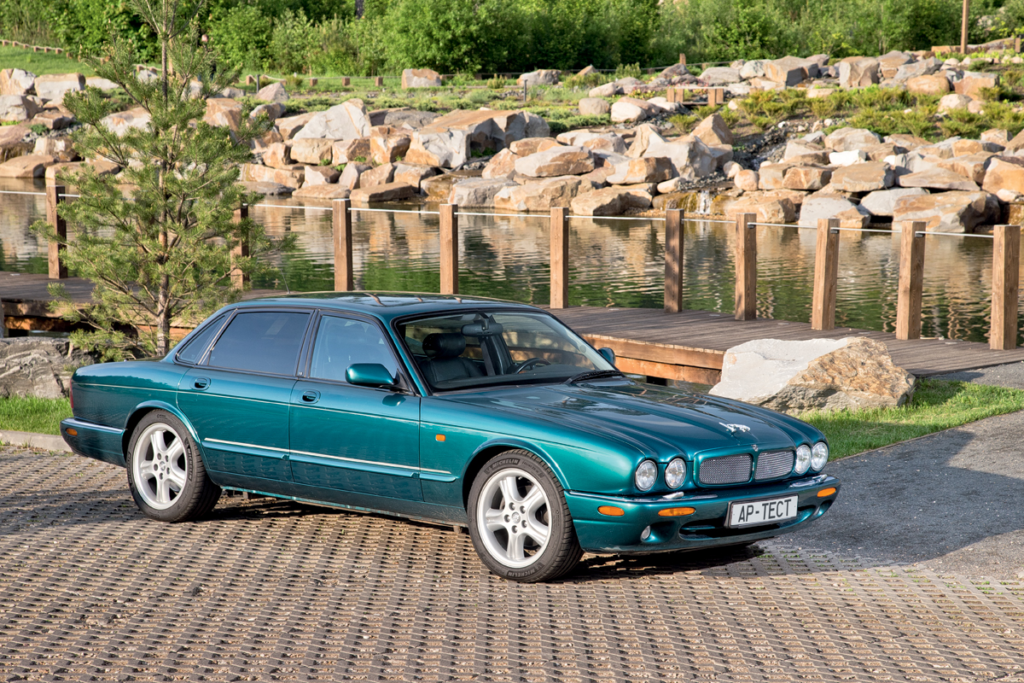
The secret to the elegance of the X308’s shape lies in its impeccable proportions, 18-inch wheels, and minimal “body thickness” above the wheel arches. In terms of visual effect and acceleration capabilities, only the BMW M5 E39 could compete with this Jaguar at the time. By the way, their popularity was comparable: 20.5 thousand M5s produced from 1998 to 2003 and 15.3 thousand Jaguar XJRs from 1997 to 2002. The result of the X350/358 series successor before and after the facelift is a total of 7,316 cars.
To some, they may only differ in headlight size and the number of wipers, but in reality, they are from two different eras and two different schools. After all, the Jaguar of the X308 generation is the last XJ with a steel body and the last XJ with the unique old Jaguar IRS (Independent Rear Suspension). However, Ford’s investments and quality standards were already used in its creation. Moreover, the “three hundred eighth” was the first car with an early supercharged 4.0 AJ-V8 engine, which later in the 4.2 variant migrated to the X350 model. This means that in spirit and chassis, it’s from the old school of the 20th century, but in technology and execution, it’s already employing 21st-century methods.

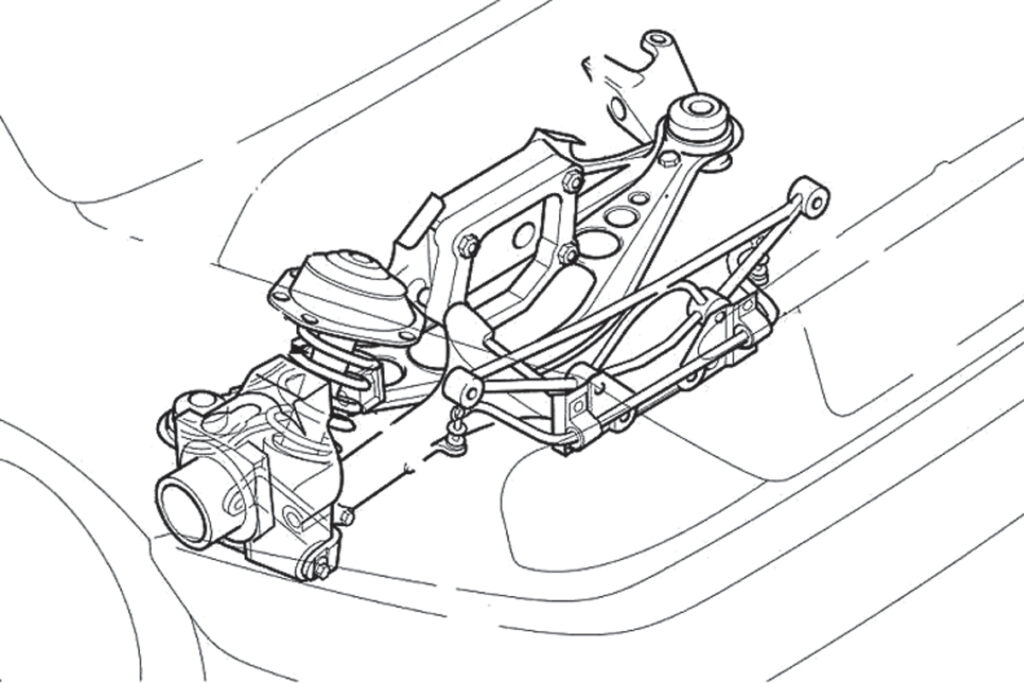
The Jaguar IRS II suspension on the X308 sedan traces its lineage back to the E-Type sports car. The key components were the subframe and half-shafts with universal joints at the ends, acting as the upper guiding elements in a three-link setup. The first-generation IRS system had two shock absorbers per wheel and inboard disc brakes near the differential. However, starting in 1986, the brakes moved to the conventional position, there was only one spring, and two control arms (a large transverse “fork” and a drive shaft). Jaguar and Aston Martin used the IRS II setup until 2006.
I picked up the car from a cozy garage in an Arbat courtyard, and I had an epiphany on the Garden Ring Road. In this Jaguar, you don’t have to guess what the R stands for. It’s “rock-n-roll”.
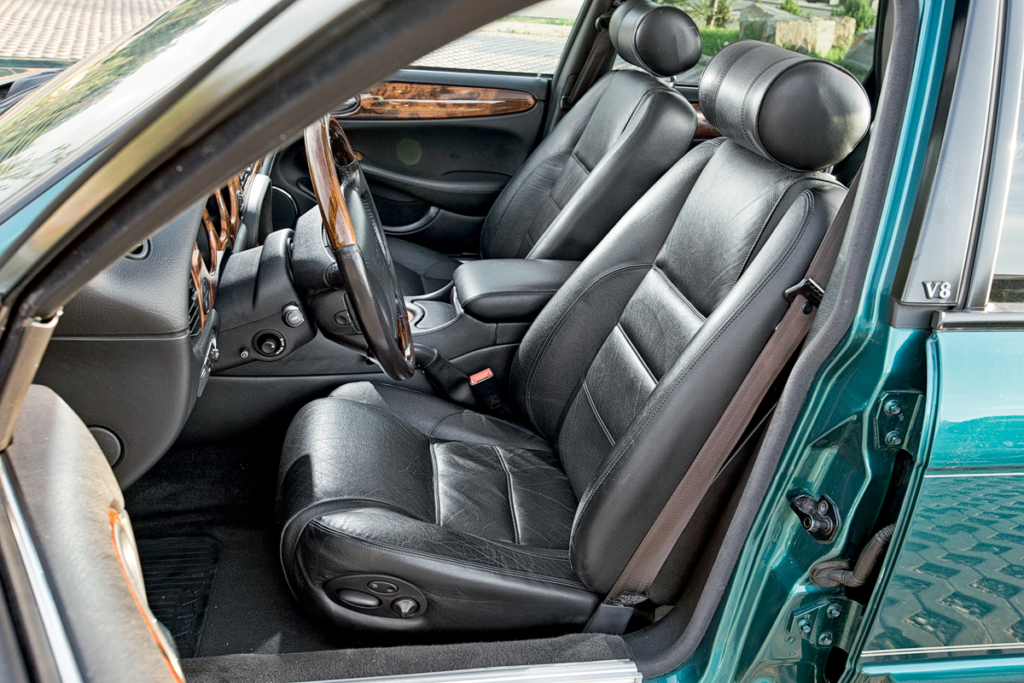
The set of adjustments is more modest, but even the height of the headrest is adjusted by a servo. The profile of the seats implies that the driver looks as sleek as the Jaguar itself.
Just getting behind the wheel shifts the conversation with the car into sports car territory. The seat is almost on the asphalt, and the roof is at a height of 1300mm – similar to a Porsche 911.
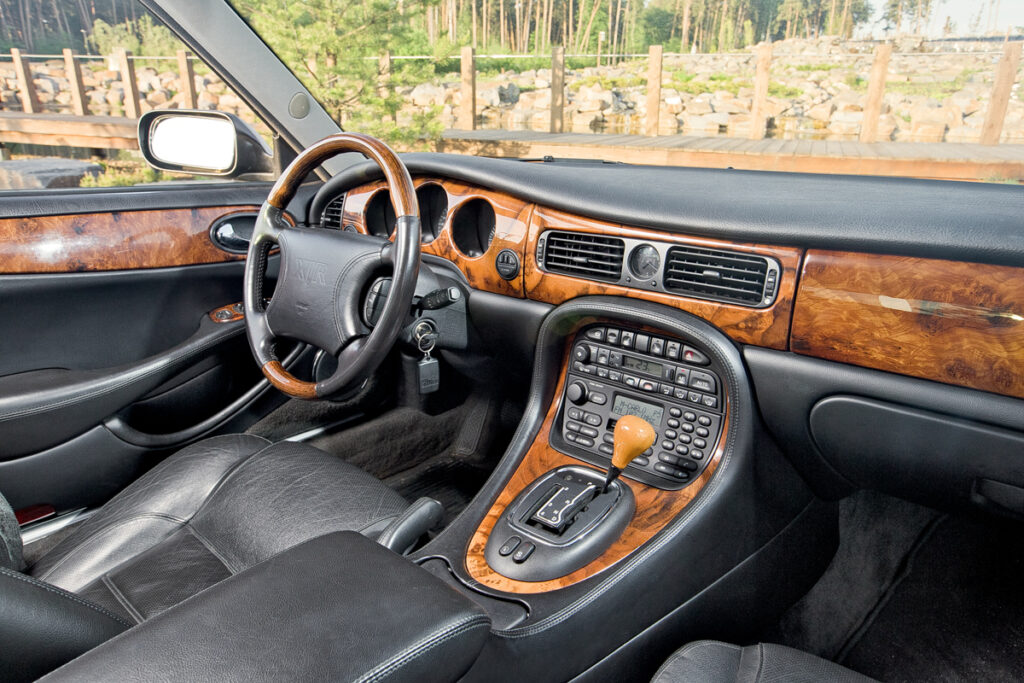

Is it the 20th century or the 21st? At first glance, the interior of the 1997 Jaguar differs only in the shape of the gauge pods and the curvature of the center console. The buttons near the automatic transmission shifter are for the sport mode and cruise control. The parking brake is still mechanical
The door closes with a quiet thud, your stretched-out legs are engulfed in a deep tunnel that seems to head toward the wheel arch. The engine awakens louder. This XJ is six years and 50,000 kilometers older than the “three-fifty,” but its cabin is equipped no worse, and in some details even better than in the “younger” Jaguar.

It has a full set of electric seat and steering wheel adjustments, heated windscreen, electronically controlled shock absorbers, built-in phone, automatic headlights, rain sensor, parktronic, and a CD changer. The climate control is single-zone though.

The buttons made of coarse matte plastic even look more upscale than on the X350. The lower LCD screen is configured to display the navigation system interface.
But the buttons have a firmer click, the dashboard plastic is soft, door pockets are lined with a specially tailored lining (there is plastic in the X350), and the glasses compartment is sewn with a flannel velvety insert. I haven’t encountered a car with such pronounced perfectionism in a long time. The BMW 7 Series and 5 Series in 1997 were more modestly equipped.
Quality? Yes, after each ignition cycle the XJR wakes up with a new position for the mirrors and seats, but you forget about this six seconds after starting.

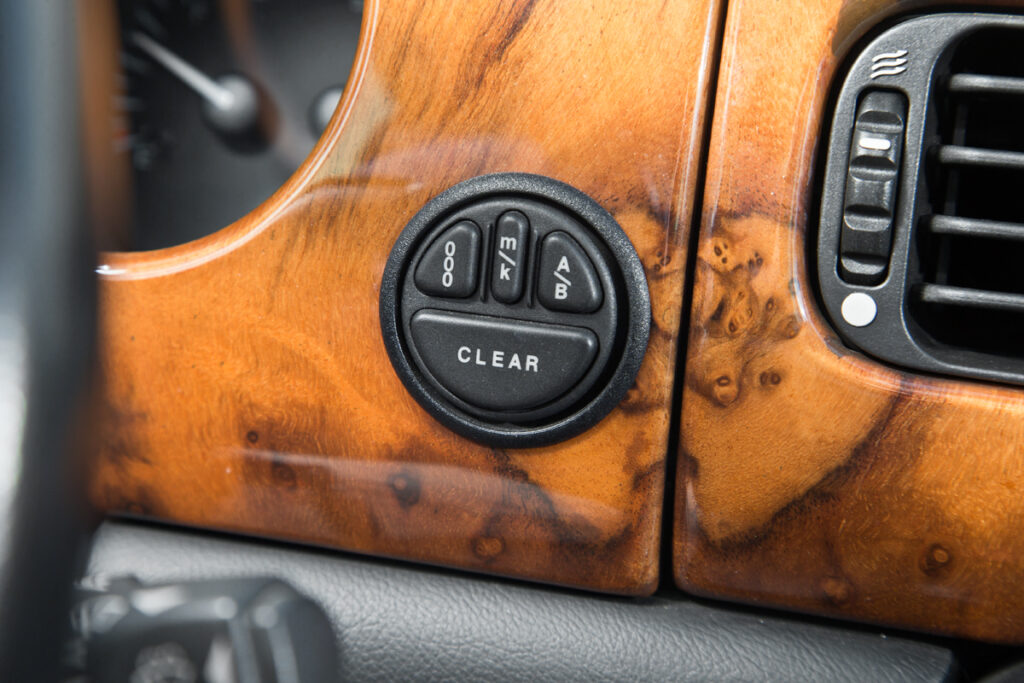
Why did Jaguar use instruments from Lexus? From this combination, only the “Supercharged” label and the 280 mark on the speedometer are suitable for the XJR. The X350 has a “graphical maximum” of 260.
The four-liter V8 with the same supercharger produces 363 hp and 505 Nm of torque, and to handle this power, Jaguar at that time equipped the “charged” sedans with a Mercedes five-speed automatic transmission. If you don’t press the Sport button, the XJ starts in second gear. That’s a bit dull. But launching in Sport mode with first gear is simply astonishing. There’s less lag off the line, and the gear ratios are chosen so that the wave of acceleration hits from 2,000 RPM. Although the gear changes occur earlier – at just over five thousand. That is, the working range of the supercharger is somewhat lower.

The welded seams of the intercoolers adorn the 4.0 V8 engine. From 1997 to 1999, it produced 363 hp and 505 Nm, and after a minor upgrade in 2000, it produced 375 hp and 525 Nm. Without supercharging, this “eight” AJ-V8 was available in 3.2 and 4.0-liter versions (243-297 hp).
The accelerator pedal has an unusually long travel, and you have to press it all the way to the firewall. The old transmission isn’t very responsive, especially when you need to shift down from fifth to fourth, so it’s better to use manual mode to keep the engine always ready. Then, the X308 is ready to take on anyone.
In a side-by-side run from 100 km/h, it initially trails the X350 by half a length but then catches up and takes the lead. From a standing start, it gives no chance at all, reaching 100 km/h in 6.2 seconds.
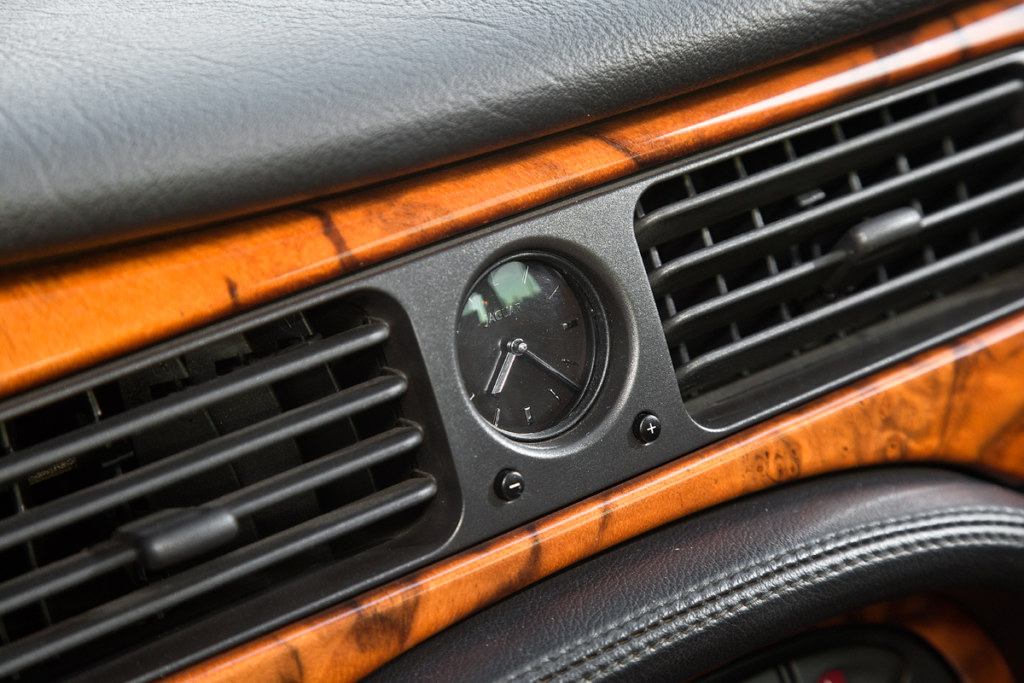
And it loves turns. The nose eagerly dives inside, there’s a thick reactive force on the steering wheel, and the rear delightfully follows through under throttle. This old rock-n-roller knows how to come off.
And the suspension! That’s what Jaguar smoothness is all about! This was the first XJ with electronically controlled CATS dampers, and for the XJR version, they were standard. I don’t know how well the electronics have held up, but when it comes to handling rough roads, the X308 is unparalleled – it rounds off any bumps. The only thing is that it dislikes ruts even more than the “three-fifty”. The body roll and sway could also be less. But it doesn’t harm precision, as once the XJR leans into a corner, it follows the arc almost flawlessly.

Oh, how I wish it had a limited-slip differential. And more powerful brakes. And balanced wheels to remove the steering wheel’s tremor at high speed.
But even in this condition, the X308 creates not just a sense of unity between the car and driver, but a fiery feeling of shared intimate adventure. There are simply no other words. I went out for an hour and a half drive in the evening, and only came back home at dawn.

The fuel tank is located behind the back seat, the filler neck is on top, and the removed cap magnetizes to the lid.
That’s exactly when, in the morning on an empty Novorizhskoe highway, I felt a wave of sadness for Jaguar. How could they lose all this?
I returned and switched back to the X350. No, it wasn’t my imagination. There’s more space, it’s more comfortable to sit, the automatic transmission operates better, and the brakes are more reliable. A cool modern sedan. Almost perfect. Its only problem is that the XJR X308 existed before it.
An umbrella is included in the driver’s set – an Englishman doesn’t leave without one.
I think Jaguar is like Porsche minus twenty years. And minus the business savvy. The Jaguar team won Le Mans 17 years before Porsche’s first victory, but then they left these races for three decades. The regular road-going E-Type Series 1 hit 250 km/h (155 mph) 13 years before the 911 Turbo appeared, but Jaguar failed to develop a sports car to replace it. And the recipe for a four-door sports car, which was used for the XJR, was also born at Jaguar two decades before the Panamera.

But… Such ‘buts’ make up the entire history of the brand.
The Jaguar X308 was a unique sports sedan of its time, and very popular. However, under Ford’s leadership, the English didn’t see its potential, and instead wanted to compete with the German flagships. Essentially, they transitioned the X350 into a new class, where nothing good awaited it. Just six years later, they had to radically change the design, and ten years later, they completely discontinued the XJ.
Thereby ending the era of the most elegant sedan at the turn of the millenia.

Rear Seats
The wheelbase of the more modern Jaguar is 164 mm longer, but the difference in legroom is barely noticeable. However, in the old “XJ”, the shins and feet touch the back of the front seats, and the roof is almost resting on the top of your head. But the cabin is brighter and more airy thanks to the third side windows.
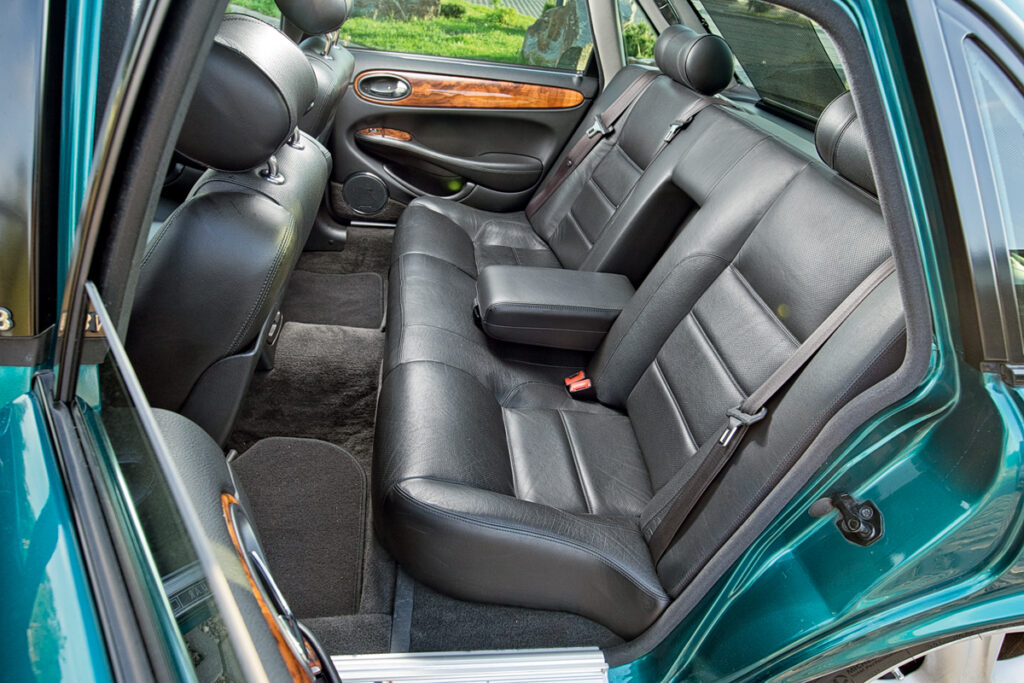
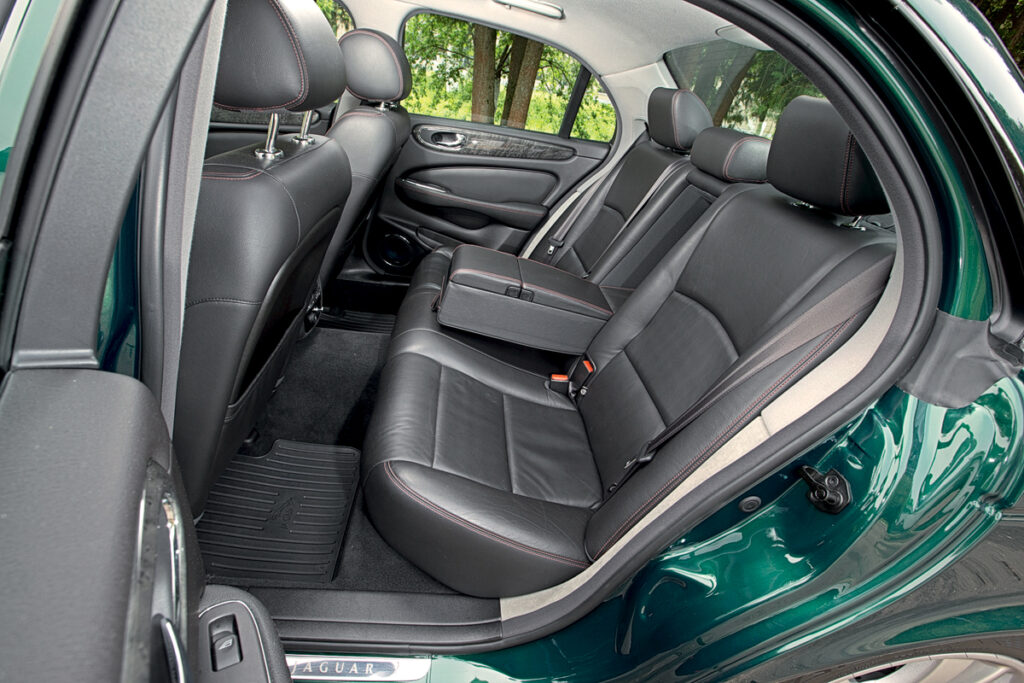
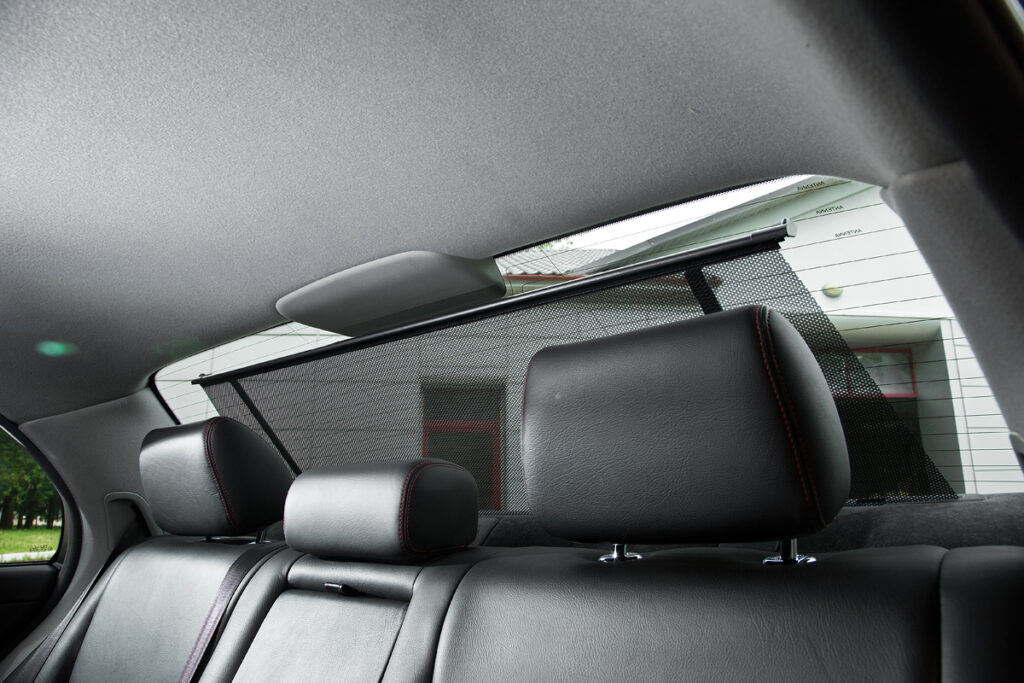
Jaguar XJR X308
Trunks
The flat, wide trunks only have a 60-liter difference in favor of the aluminum sedan: 410 liters versus 470 liters. Also, the hinges on the X350 do not reduce the useful volume of the compartment. Although the floor is flatter in the old Jaguar, and the loading height is, of course, lower.



Jaguar XJR X350

J with many X’s
If car culture were part of the school curriculum, students would have to wait until high school to be able to learn the Jaguar segment. Even preschoolers know the differences between the BMW 3, 5, and 7 series. The indices of different generations of Porsche 911 are middle school stuff. But the logic of the evolution of the XJ sedans is like nonlinear equations with an infinite set of X’s.

Jaguar XJ Series I (1968–1973)
The first XJ, a model from 1968, replaced a whole fleet of Jaguar luxury cars. It was equipped with an inline-six XK series engine, and featured an independent rear suspension (IRS) with a ‘trailing arm’ design, which made the sedan akin to the E-Type roadster. At the end of 1972, the XJ became the world’s only post-war sedan with a V12 engine. It then underwent a series of facelifts over the next 14 years – these were the Series II and III versions – and it was only in 1992 that the original models in the series were retired.
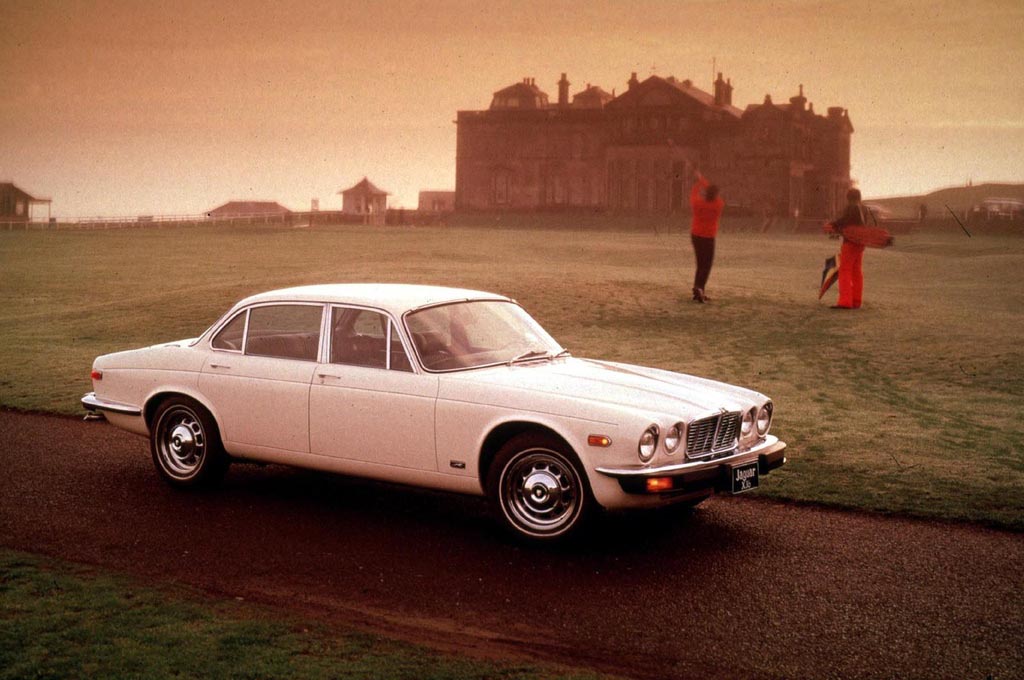
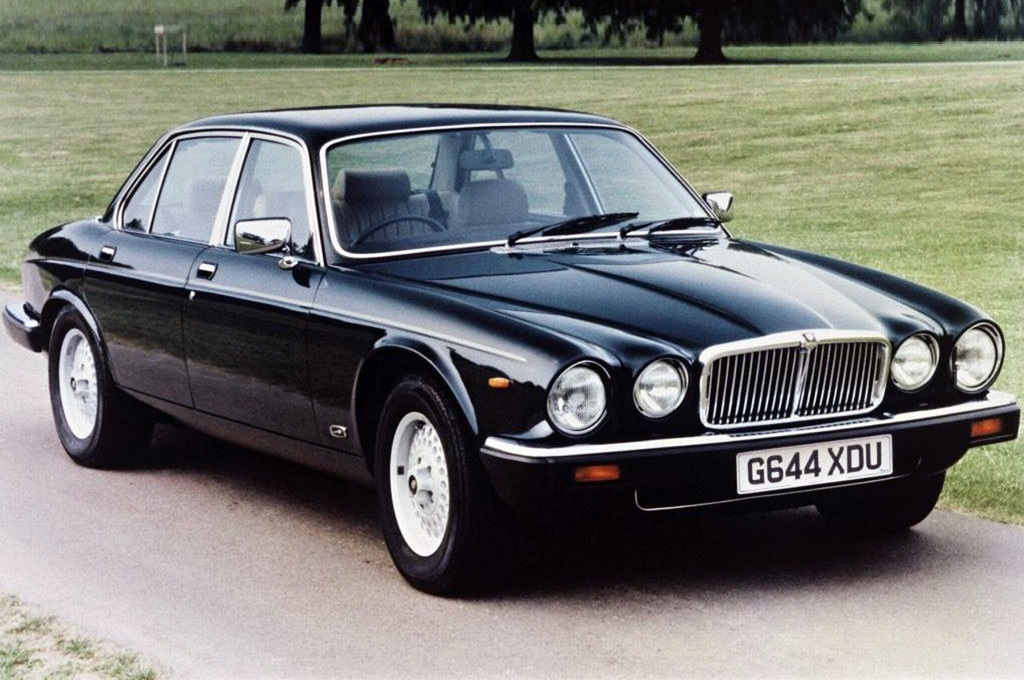
Jaguar took over 15 years to develop the XJ’s successor and only managed to launch it after gaining independence from the British Leyland Group in 1984. In the mid-1980s, the British were doing well financially because Jaguars were cheaper than German cars in the US, and in England, the company was cutting labor costs and saving on the development of new models.
The only new model in the 1980s was the second-generation XJ with the internal code XJ40. It was built on a new platform with a revised version of the IRS and a new inline-six engine, the AJ6 (2.9-4.0 liters). However, the engine bay was designed to be narrow to prevent British Leyland managers from fitting the Rover V8, which was considered an alien engine. For the same reason, their own V12 engine did not fit, and XJ12 versions were produced in the old body style (Series III) until 1992.

Jaguar XJ Series XJ40 (1986–1994)
However, in 1988, Jaguar, in collaboration with TWR, created the JaguarSport joint venture and launched the first “charged” XJR, which initially only had chassis tuning, but later received a 4.0-liter engine boosted to 253 hp.

Jaguar XJR Series XJ40 (1988–1994)
The XJ40 generation was produced for eight years, and if you count all the facelifts starting from 1968, it turns out that Jaguar made a new XJ roughly every seven years. This seems like an excellent pace, but in reality, even the platform for the XJ40 turned out to be a deeply modernized version of solutions that were developed back in the late 1950s and this was not yet the end.
Jaguar also prepared the replacement for XJ40 in an accelerated cycle: the XJ90 sedan was supposed to be released in the early 1990s. However, by the time of its anticipated launch, Jaguar was under the umbrella of the Ford Motor Company, and the Americans were horrified by the realities of Jaguar’s economics. The first CEO of the Ford era, Bill Hayden, said that in his entire career he had only seen one production facility worse than the legendary Browns Lane, and that was the Soviet GAZ. In those days, each Jaguar spent three times more time on the assembly line than the most expensive Ford. Moreover, the number of defects was 2,500 per 100 cars, and 13% of the revenue was spent on warranty repairs and recalls (Ford fit within 3%).
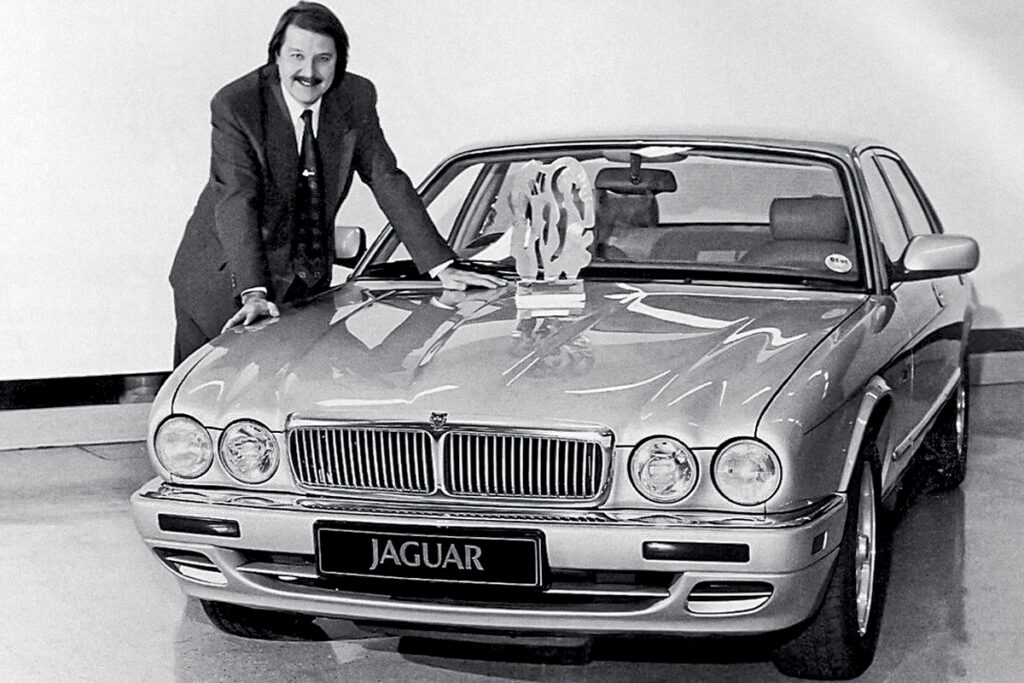
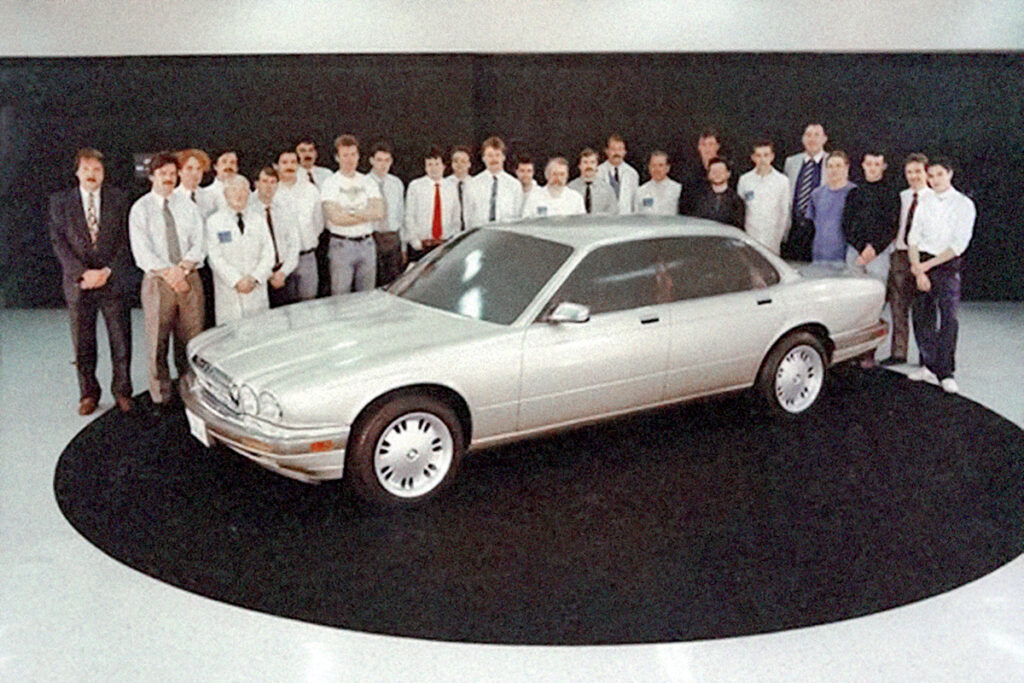
All Jaguars from the 90s were created under the leadership of designer Geoff Lawson. He had been working at the company since 1984, but he reached the peak of his creativity thanks to the stream of new models during the Ford era: X300 (first slide) and X308, XK, S-Type. Among his projects was also the unrealized XJ90 sedan (second slide), but some of those ideas were incorporated into the X350 model. Lawson passed away in 1999 from a stroke while working on the front-wheel-drive X-Type family and the first aluminum XJ sedan. Ian Callum was then appointed as the new chief designer.
As a result, instead of the new XJ90 sedan in 1994, a deeply revised XJ40 with the X300 code was released. It inherited the chassis and cabin frame from the XJ40, but the rear end and engine bay from the XJ90, as well as an updated interior and a new inline-six AJ16 engine, which was equipped with a supercharger for the XJR version and boosted to 326 hp.

Jaguar XJ Series X300 (1994–1997)
Ford invested 200 million pounds into the X300 project (the factory finally received an automatic welding line), but the flagship still lacked a prestigious engine to compete with Mercedes, BMW, and Lexus models with V8 engines. Therefore, just three years later, another new XJ emerged – now with the X308 code.
Essentially, it was still the X300 with the old body and XJ40 chassis, but with a new interior and its own aluminum AJV8 engine, into which Ford invested another 200 million. The supercharged version of this V8 was used in the XJR and Daimler Super Eight.
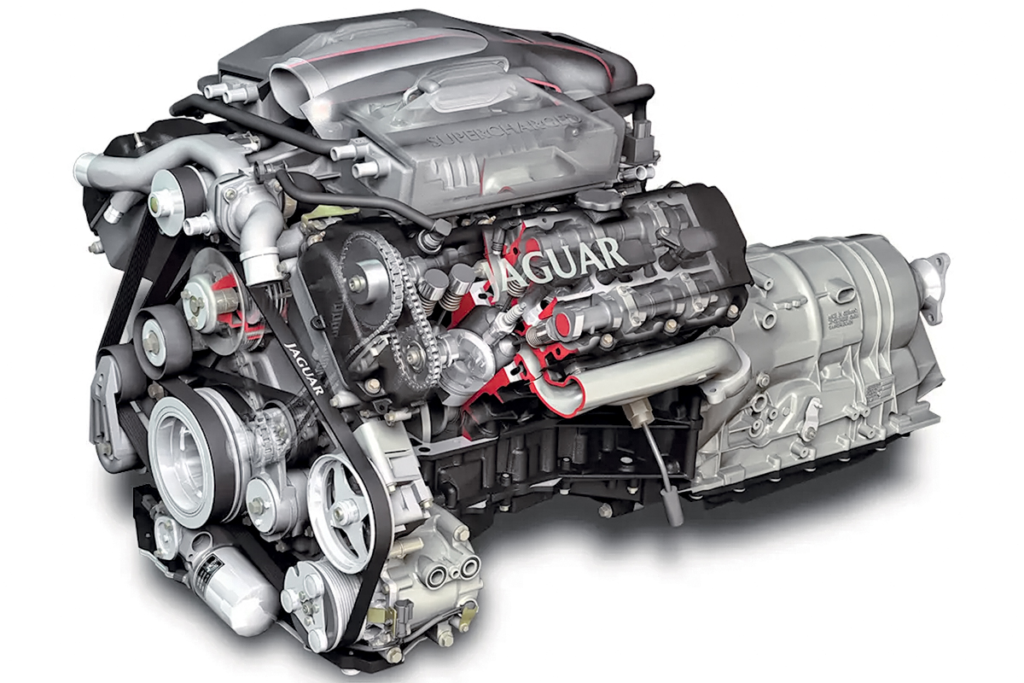
The unit that technologically links the 90s Jaguars with current ones is the aluminum V8 from the AJ26 project. The successor to this engine is still being produced in a deeply upgraded variant called the AJ133, a 5.0-liter engine with new block and supercharger – it is installed in the F-Type, F-Pace SVR, and Land Rover Defender V8.
And just six years later, another new XJ appeared – this time truly designed from scratch for the first time in 35 years: an aluminum sedan with the X350 code. The body for it was unique, but the chassis followed the suspension design of the smaller S-Type sedan. The latter, in turn, was a product of the Ford DEW98 platform, which underpinned the Lincoln LS and Ford Thunderbird.
It is believed that the DEW project was closed as unsuccessful, but if you look at the suspension design of all Jaguars from the 2000s and 2010s, it becomes clear that the XJ and S-Type shared this platform with the XK, XF, and F-Type models. The same platform was also used for the next XJ under the X351 project, which was launched in 2009 and ceased production only in 2019.
Thus, over 51 years of production, the flagship Jaguars had only two and a half original platforms. Meanwhile, statistically, the most successful model is the archaic and unreliable XJ40 generation: 208,733 units in eight years. The XJ Series III had a run of 177,243 units over 13 years, Series II – 127,078 in six years. The X308 production counter stopped at 126,620 in 2002. And the X351 sedans were produced in 122,000 units over ten years. Finally, the rarest XJs are the Series I (98,164 vehicles), X300 (92,038), and X350 (83,566).

In this family portrait, which Jaguar prepared for the 50th anniversary of its flagship sedans in 2018, the one-of-a-kind XJ coupe, of which 10.5 thousand units were made from 1975 to 1978, is also featured. Additionally, the Parisian concept X350 Aluminium from 2002 and two special versions of the latest generation – the most powerful in history, the XJR575, and the anniversary edition XJ50 – are also included. However, the facelifted X356 (2005) and X358 (2007) sedans did not make it into the portrait.
However, Jaguar’s sales statistics are also very non-linear. In the ’60s, the company was flourishing, producing 25,000 cars a year, but in the early ’90s, the break-even point was at 50,000 units – at a time when sales volume in 1992 fell to 20,000. Therefore, the cycle of the seemingly popular XJ40 coincided with a time when Jaguar was losing a million pounds every day.
The least successful X350, on the other hand, helped set a sales record for the Ford era: 126,000 cars in just 2003 alone. However, by 2005 the public had become disillusioned and Jaguar sales again dropped to 84,000 units, and Ford was preparing to exit: ahead was the Ratan Tata era.
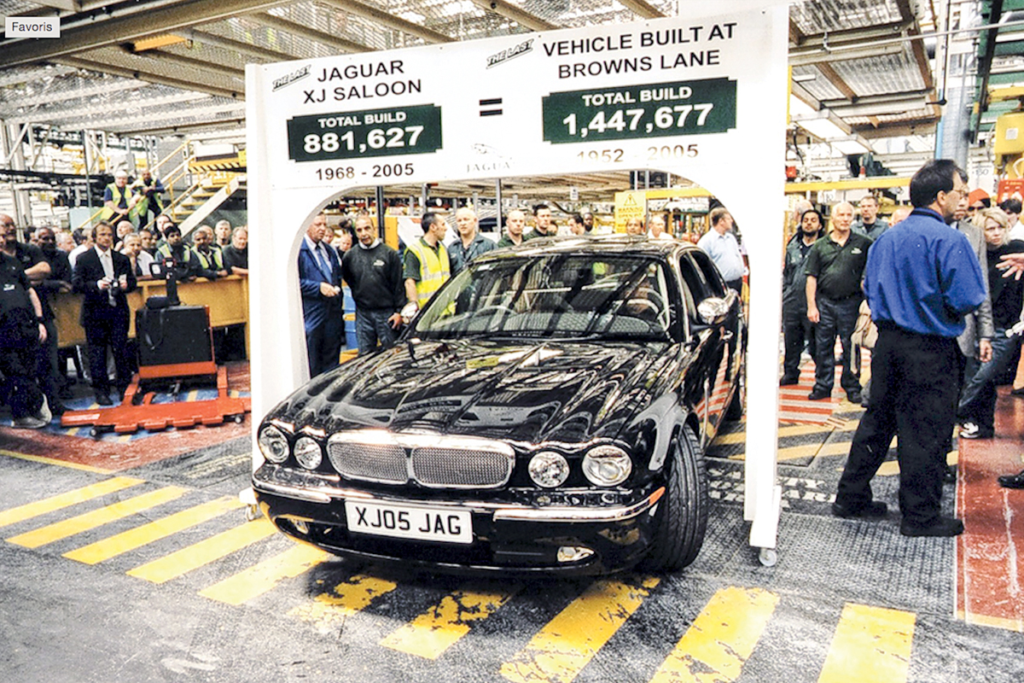
The first Jaguars of the X350 family were made at the historic Browns Lane factory, where all previous generations had been produced since 1968. But sales for 2005 fell so much that the factory had to be closed, and the XJ moved to the Castle Bromwich factory.
And all of this continues to this day. In 2018, Jaguar sold 177,000 cars worldwide, and in 2022, only 60,000. However, since 2019, the XJ is no longer a part of these equations.
Photos by Dmitry Pitersky and Jaguar
This is a translation. You can read the original article here: Jaguar XJR двух поколений: чисто английское самоубийство

Published June 15, 2023 • 22m to read



